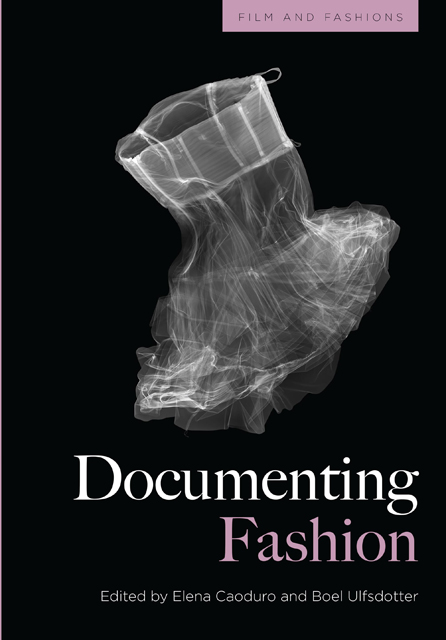6 - Extending the exhibition narrative: making sense of non-fiction fashion footage
Published online by Cambridge University Press: 20 October 2023
Summary
Introduction
Over the past twenty-odd years, fashion exhibitions have increasingly become subject to significant academic criticism and research. During the same period, fashion curation has gained extensive academic and museological kudos and become a sought-after professional occupation. In concert with these developments, the spatial organisation and narrative of dress exhibits has received increasingly serious and careful consideration in museology.
Alexandra Palmer, in a much-cited article in Fashion Theory in 2008, called for museums to ‘mount clearly curated, researched exhibitions that are educational and do seriously attempt to add to a larger body of cultural intellectual knowledge’ (Palmer 2008: 57). At about the same time, Valerie Steele stated: ‘I believe that a significant percentage of museum visitors really want to learn something when they see an exhibition. There is no reason why exhibitions cannot be both beautiful and intelligent, entertaining and educational’ (Steele 2008: 14, emphasis in original). For the purpose of this essay, I argue that these two cues represent the first outright calls for the museification of fashion, and thus encouraged the development I outline above.
To begin with, both Palmer's and Steele's statements aired a deeply set affinity and agreement with the twofold remits of the ‘new museology’ idiom that exhibitions should provide both entertainment and education (see Hooper-Greenhill 1992, 2000). ‘New museology’ emerged in Great Britain in the 1970s and 1980s and ‘investigates the functions, mission, need, and development of the museum, with a particular focus on its relations with visitors’ (Mandelli 2019: 7). Having gleaned the most cited academic texts on fashion curation and fashion-related museology published over the past twenty years, it is my contention that the historiography of fashion display increasingly reflects a museum discourse underlining the fashion display's cultural worth in direct relation to audience reception. Fashion curation today (2022) seems to effortlessly respond to the above scholars’ call for an educational and intellectual exchange between the exhibited material and the visitor in accordance with the new museology idiom. However, bar the occasional mention of catwalk footage, the overall discursive implications related to moving images have never been discussed in detail by scholars or academic critics involved with visual culture or the museification of fashion.
- Type
- Chapter
- Information
- Documenting Fashion , pp. 122 - 143Publisher: Edinburgh University PressPrint publication year: 2023

